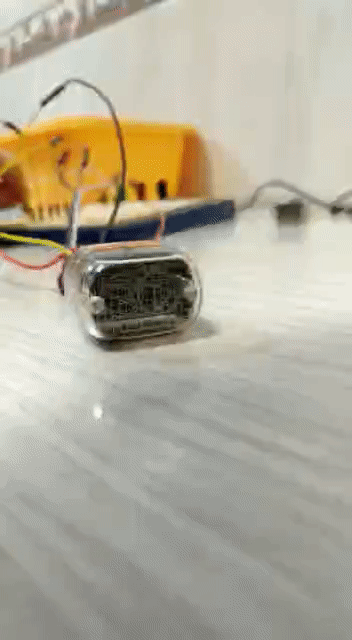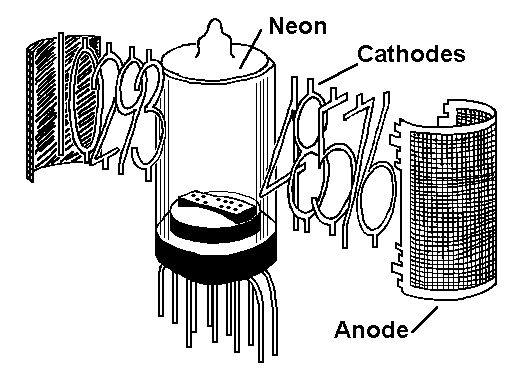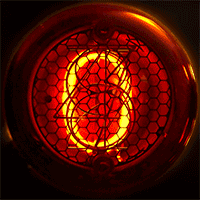Nixie Tubes
What is a Nixie Tube?
A Nixie tube is an electronic device used for displaying mainly numerals, but some of them can also display letters or other symbols. They are made of a glass tube that contains a wire-mesh anode, and multiple cathodes shaped like numerals or other symbols. The tube is filled with a gas at low pressure, usually mostly neon and often a little mercury or argon. Applying power to one cathode, turns on the corresponding digit.
This fact by itself is not very interesting. What makes Nixie tubes so special is the way they display the information: When a digit is turned on, it glows in an orange glow discharge. This gives them that retro look from the classic soviet era.
Although it resembles a vacuum tube in appearance, Nixie tubes have no heater or control grid: Typically a single anode (in the form of a wire mesh, not to be confused with a control grid), and shaped bare metal cathodes for the numerals. Its operation does not depend on thermionic emission of electrons from a heated cathode. So they are essentially a variant of the neon lamp.
Nixies were used as numeric displays in early digital voltmeters, multimeters, frequency counters and many other types of technical equipment. They also appeared in costly digital time displays used in research and military establishments, and in many early electronic desktop calculators.
Driving Nixie Tubes
Driving Nixies outside of their specified electrical parameters will accelerate their demise, especially excess current, which increases sputtering of the electrodes. A few extreme examples of sputtering have even resulted in complete disintegration of Nixie-tube cathodes.
Cathode poisoning (incomplete glow coverage of a glyph) can be abated by limiting current through the tubes to significantly below their maximum rating, through the use of Nixie tubes constructed from materials that avoid the effect (e.g. by being free of silicates and aluminum), or by programming devices to periodically cycle through all digits so that seldom-displayed ones get activated.
In the event that cathode poisoning affects any of the cathodes in a Nixie tube, it is possible to fix it. Remember to exercise inactive cathodes (occasionally cycle the tubes through all cathodes) to avoid cathode poisoning. This will keep cleaning the coating off before it becomes too thick.


